Newsletters

Dear NSF community,
We hope you are enjoying the back to school season!
For those of you entering or in high school, this edition of the NSF newsletter has a year-by-year breakdown of college admission tips. We also have some information about model government programs that may be of interest to you, and a writeup from a recent NSF Youth Ambassador. Finally, you can read about the value of education from an NSF community member, and the relevance of math in the 21st century world.

This fall, the season of choosing which extracurricular activities we will continue to pursue, or new ones we will try, I wanted to write about career options that are off the beaten path. Many of us are interested in becoming doctors or engineers, but with the advent of several new technologies in the 21st century, these fields are converging in ways that are not immediately obvious.
For example, intellectual property/patent law makes an excellent career choice for someone with excellent critical thinking and speaking abilities who is also interested in studying a STEM (science, technology, or engineering)-oriented field after high school. Many patent lawyers hold undergraduate or higher degrees in fields such as chemistry, electrical engineering, computer science, or biology, and are uniquely qualified to work on cases involving technical patents in these fields. With patent applications on the rise, the need for patent lawyers continues to grow and makes this career an excellent option for those with diverse interests.
Other quickly expanding areas include careers in nature – whether it be environmental law, environmental policy, bioinformatics, or environmental economics – and mental health careers – counseling, psychology, and psychiatry, as the importance of mental health continues to be highlighted. Though it can be tricky to pick what one is truly passionate about, I hope this editor’s note has been informative and gets you to consider some unconventional career choices!
NSF Newsletter Editorial Team Member
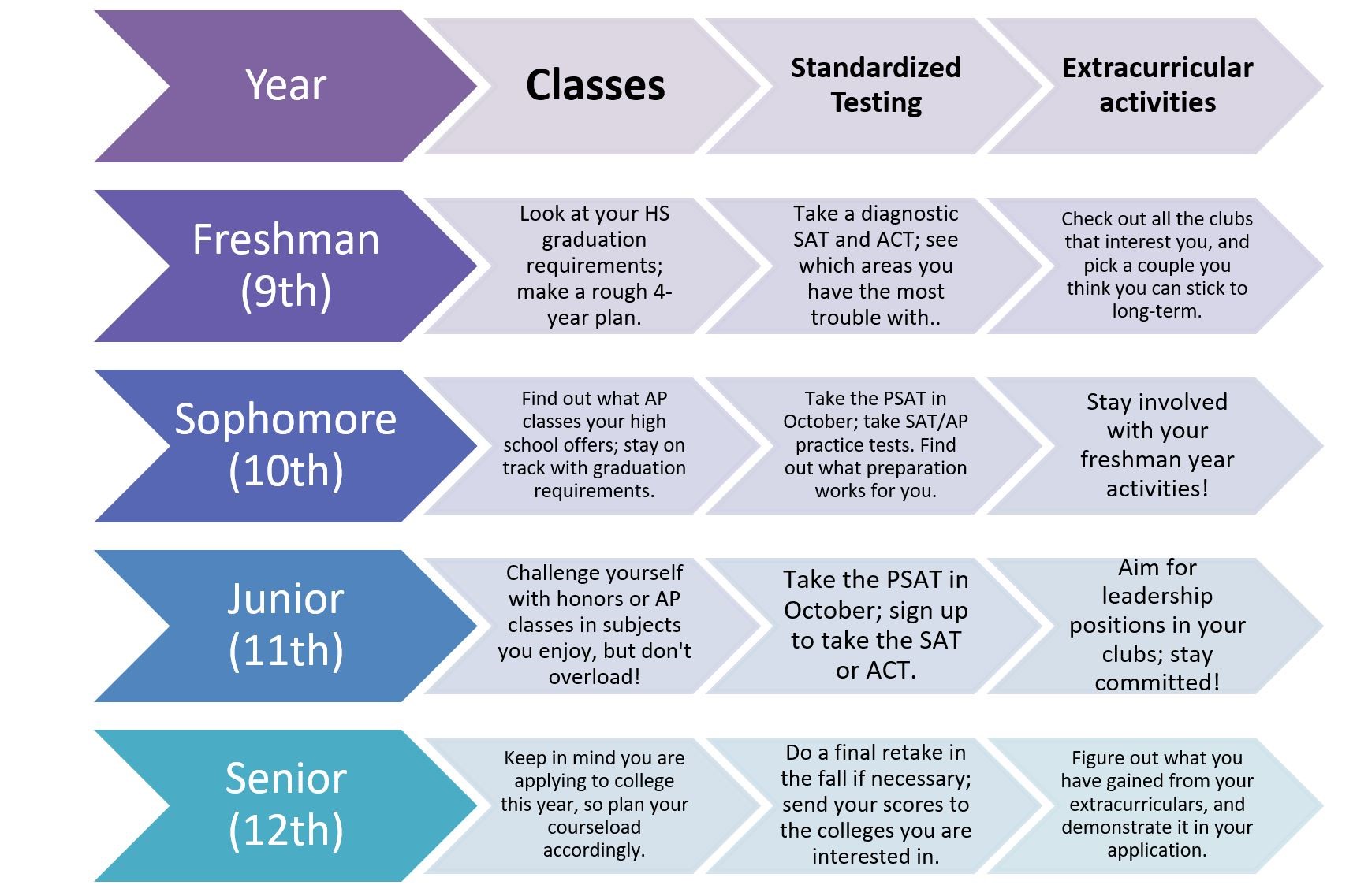
* Correction: In the sophomore year standardized testing section, it should say “take SAT/ACT practice tests”, not “SAT/AP practice tests”.
NSF Newsletter Editorial Team Member
*Note: Girls State and Girls Nation have counterparts for male students, called Boys State and Boys Nation. In this article, Girls State and Girls Nation will be referred to frequently, but keep in mind that the same programs are offered for boys.
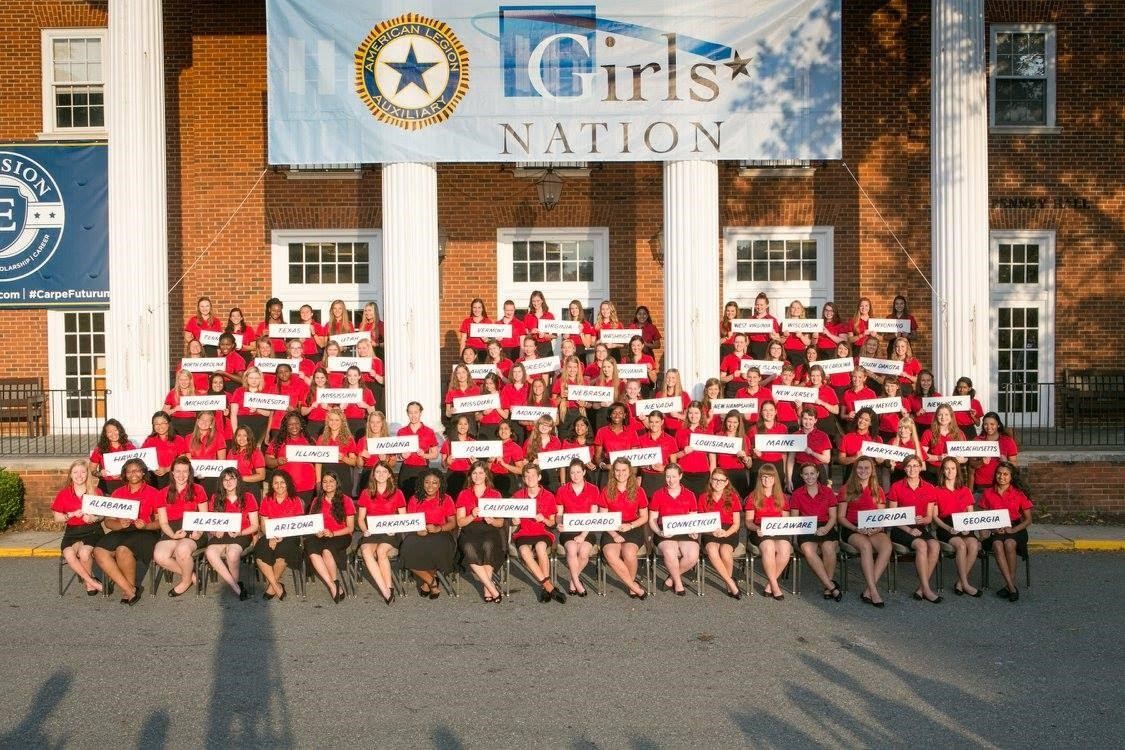
“From the outside looking in, you cannot understand it. From the inside looking out, you cannot explain it.” This has often been said about Girls State and Girls Nation, two premier model government programs sponsored by the American Legion Auxiliary every summer. Girls State is a weeklong program held in each of the 50 states every June or July, where one to three motivated rising senior girls from each participating high school are selected to attend as delegates.At Girls State, two delegates from each state are selected to attend Girls Nation as “senators,” where 100 senators represent each of the fifty states in Washington, D.C. I was lucky to be selected by my high school as one of approximately 300 delegates who attended Arizona Girls State this past summer, which was held in my hometown of Tucson from June 5-11, 2016. I was even more fortunate to be elected by my 299 peers as one of the two Arizona Senators to attend Girls Nation, which was held in Washington, D.C. from July 23-30, 2016.
At Girls State, delegates recreate local, county, and state government by running for and serving as city mayors, county supervisors, state representatives, superintendent, attorney general, secretary of state, lieutenant governor, governor, and more. The delegates are also split into two mock political parties, and party leadership positions (such as precinct committeemen and party chairmen) are elected. Elections are held throughout the week, speeches are made by candidates, and campaigning is done in order to gain votes. The week is full of friendly competition, government-related activities (such as city hall meetings, mock legislative sessions, and mock trials), visits from empowering female guest speakers, and, of course, fun with new friends from all around the state. Going into Girls State, I knew only one other person – the other girl who was representing my high school with me – but upon leaving Girls State, I had made so many lifelong friends from different parts of the state. Even today – five months after Girls State – we keep in touch, and I am confident we will do so for some time to come.
At Girls State, I ran against fifty other delegates to earn one of two positions as a Girls Nation Arizona Senator. In addition to campaigning with handmade posters (which must be made during the week) and building rapport with hundreds of other girls, I also gave a speech on a federal bill I would write, since each state gets to author one bill at Girls Nation, where various mock Senate sessions are held and each state’s bill is debated by the senators.
At Girls Nation, senators learn about federal government, including the legislative branch (mock Senate sessions are held throughout the week), the judicial branch (Supreme Court Justices are appointed), and the executive branch (a presidential election is held). Also, party caucuses and rallies are held. As the national party chairman of my mock political party, I had the honor of presiding over caucuses, introducing candidates, and organizing rallies. But most importantly, I learned so much about federal government through our daily activities and our excursions into the heart of Washington, D.C. Girls Nation Senators have the privilege of attending an exclusive meeting with their state’s Senators or Senators’ staff, hearing from top government officials, and even meeting the President of the United States.
Girls Nation was, without a doubt, one of the best weeks of my life. I was so humbled by the strengths of those among me and loved the political, cultural, and geographic diversity that surrounded me. But most of all, I was so amazed to see that so many of the senators shared many of the same core values that I am confident will move our nation forward in the coming years.
I strongly encourage all current juniors with an interest in politics and government to attend Girls State or Boys State this upcoming summer. Contact your high school counselors for information on how to be selected from your school. I can assure you that your experience will be one that you will not forget!
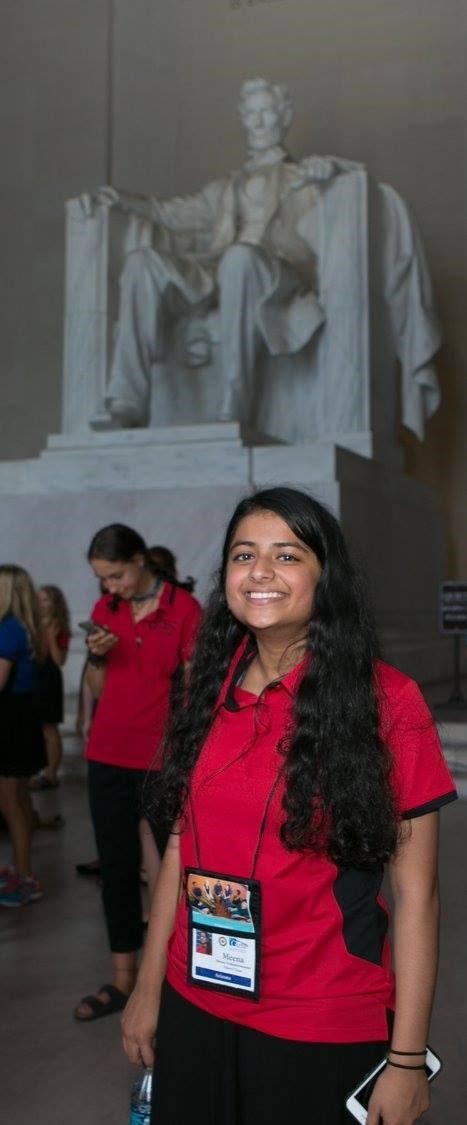
NSF Newsletter Editorial Team Member
“Education is not the filling of a pail, but the lighting of a fire.” – Nelson Mandela
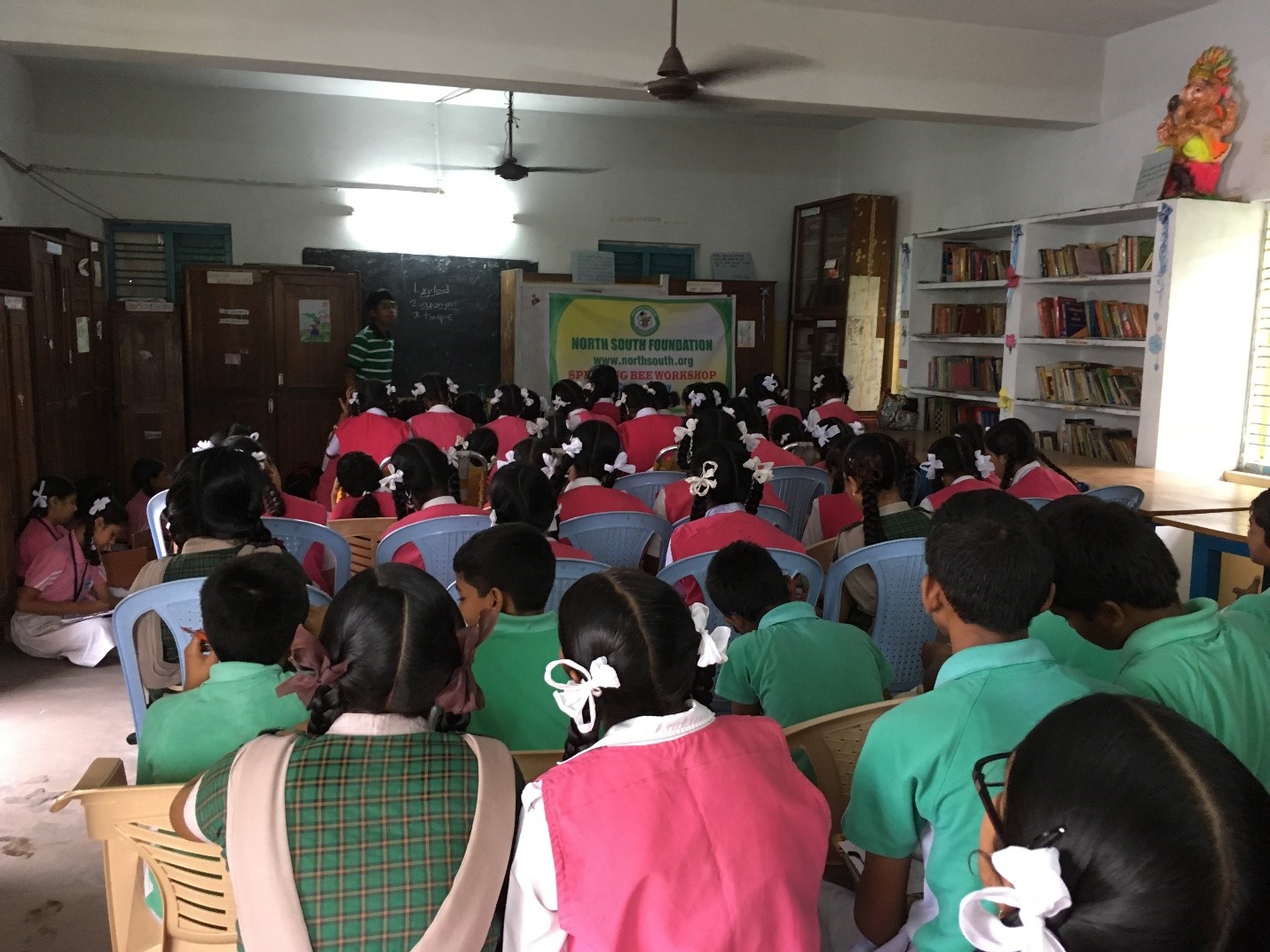
When I first decided to register for participation in the NSF APNA Program, I thought it was rather unlikely that my request would be entertained. The program, which was exclusively for high school students who wanted to volunteer their time to help students in India, instantly captured my attention. But there was one hitch: I was a 7th grader, which meant I was ineligible to participate. But fortunately for me, I had placed seventh in the Scripps National Spelling Bee this year (2016). This meant that because I had studied spelling quite extensively, there was a chance — a sliver of a prospect — that I would be accepted as an NSF Youth Ambassador. A few days later, to my pleasure and surprise, my request for registration was accepted.
Once my APNA registration was accepted, we had to decide the specifics of the task: Which school were we to go to, when were we to conduct the workshop, etc. Our first thought was to contact my mom’s former school (Visakha Valley School - which is considered an elite school) and conduct the bee there, but we decided against it, because we were looking for a municipal school to conduct our workshop in since they would benefit much more. We finally settled on an old and well-established but not an elitist school in Visakhapatnam (VT High School). After 1-2 days of talking with the teachers and explaining the APNA program in detail to the teachers, we were ready to start the classes.
One of the things that surprised me was the eagerness with which the students absorbed what I had to share. Back in 6th grade, I had started a Vocabulary Club in my middle school in the U.S., and had the school announce the fact to spread awareness in the hope that I could try to share my knowledge and help their language skills. At the end, not one person had turned up to participate in the class. In contrast, about 50 people had appeared for my spelling course within a day’s notice. In fact, the students were so thrilled by the class that they invited some of their friends to participate, and by the final day, there was a total of 62 people in the class. In this sense, what I observed in India, where students have the skill and the thirst for knowledge but suffer from a dearth of resources, is diametrically opposite to what I have experienced in the U.S., where students have a deluge of resources, but lack the drive and passion to learn. This is why programs such as North South’s APNA are important in spreading knowledge and inspiration, in order to kindle an interest in learning amongst students. In India, the average classroom contains not much more than a blackboard and benches for the students, but the students scrupulously write down all the notes the teachers write on the chalkboards, and remember 80-90% of the material taught. In the U.S., an average classroom is typically decked out with a whiteboard, a smartboard, a projector, individual desks, laptops — you name it. However, an ordinary student here has little fire in his or her belly to imbibe the material taught in school, even with the aid of all the technology at the fingertips of this generation.
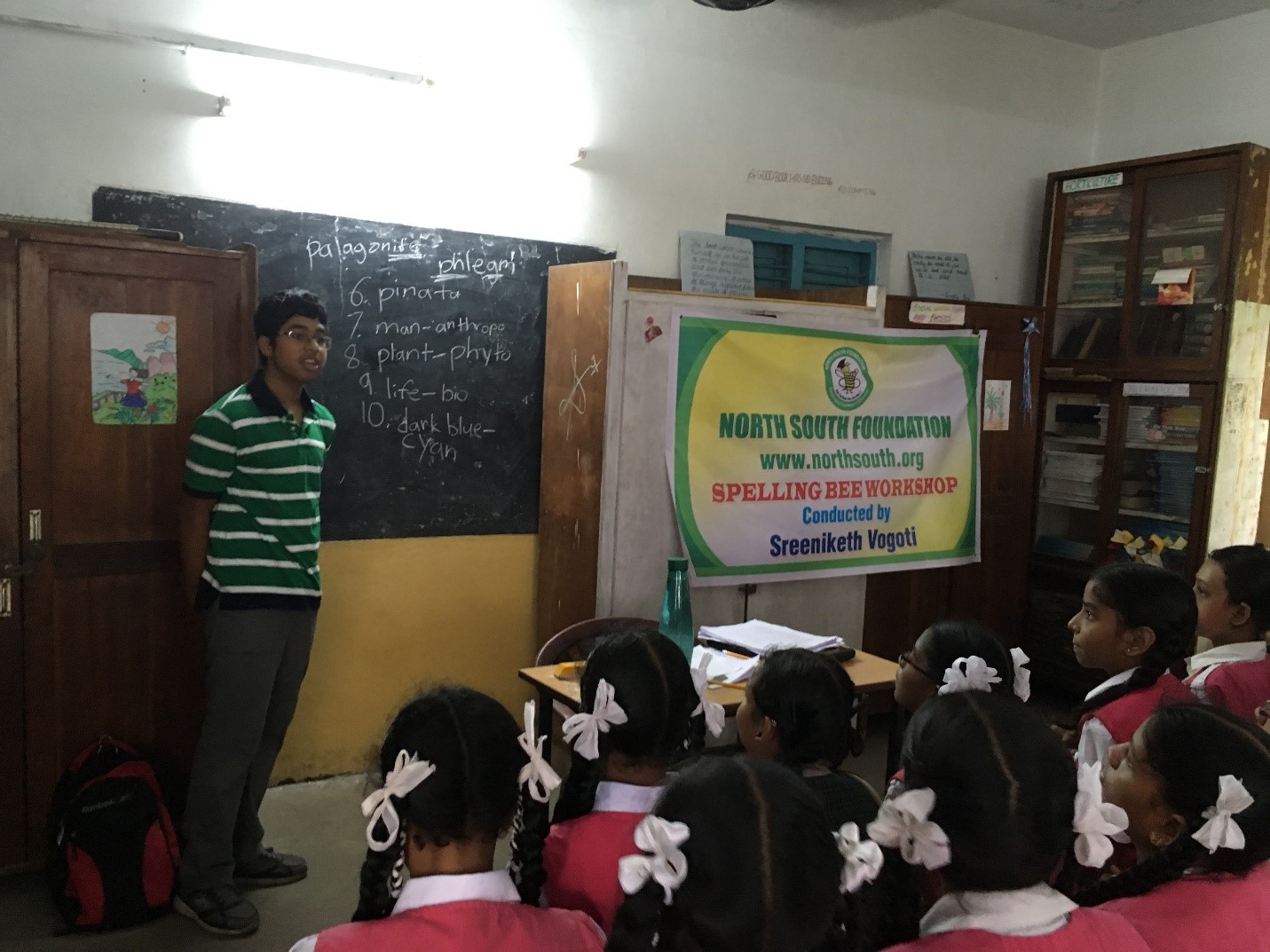
But, not everything was perfect. Because the school was not open during the weekend, we only had three days to teach all of the slated spelling material instead of the projected five days. But, as an APNA ambassador and a spelling workshop coordinator, I was also tasked with the responsibility of thoroughly covering whatever material I went over with the students. So, I just had to improvise and still meet all the objectives. I had to cut out any material that I thought was extraneous, but luckily with some pragmatism I was able to manage to balance all of the activities without forsaking anything of significance. The teachers were also helpful, and they helped seat and settle the students and provided moral support. The teachers helped me all through the three sessions, and especially assisted me during the spelling bee contest we had at the end of our workshop. The teachers also made sure the students were understanding all of the material and helped me grade the test papers after the spelling bee contest.
On the first day, we covered patterns of pluralization, differentiation between nouns and adjectives in spelling, etc., and started discussing language patterns. On the second day, we finished basic revision of language rules and also completed roots, prefixes, and suffixes. The students were thrilled by the idea of being able to decipher the definition of a word without having ever seen it before. Throughout the sessions, I continually quizzed the students on words we had discussed in class so as to maximize the students’ retention of everything that we had discussed. On the third and final session, we went over even more roots (there are always more roots that you can learn) and reviewed the material we had covered throughout the three classes.
Later on the third day, we had our spelling test. Based on the scores from the preliminaries test, the top ten students participated in the oral round. The spelling workshop was neatly wrapped up with the awards ceremony, for which the principal was present. We individually recognized the top ten students, and we gave prizes to the top three students. Despite it not being part of our original plan, we gave away a prize to the student who had ranked fourth since she had gotten a perfect score in the written test but ended up missing a word in the oral rounds. In advance, we had printed out certificates for every one of the participants, and they were very happy to have participated in the program. The principal was exceedingly grateful that we had decided to set up the workshop in his school, and he delivered a powerful speech in front of all of the workshop participants and the teachers. I was moved by the speech, which helped me realize the magnitude and impact that the spelling workshop had on the participants.
In conclusion, I thoroughly enjoyed the spelling workshop because I had the opportunity to help students who otherwise might not have had an avenue to learn spelling rules from. I now have the confidence to teach spelling and vocabulary. Additionally, this experience inspired me to want to help improve education for the meritorious but poor and underprivileged students. I am extremely happy to express my profound gratitude to NSF and Mr. Venkat Gade (the NSF coordinator) for giving me the privilege of participating in the APNA program. I encourage my fellow NSF students to enroll in the APNA program, and I look forward to participating in the program again.
NSF Youth Ambassador
I’m Akshaya Venkatesh, a rising Junior at Chaminade College Preparatory High School and I live in Simi Valley, California. Recently I was selected for an after-school tutoring program. Every week, I tutor middle school children for $20 an hour. I shared the news with my mom and she asked the question “why are you getting money for teaching another student?” At that time, I had decided to contribute the earnings to North South Foundation. I was not collecting the money for my own personal use, but instead to donate to North South Foundation. I did not discuss about my plan to her.
I have earned $520.00 and would like to give all the money earned to another ambitious student who wants to pursue a college degree. Even though the amount is very small, I know that this small amount will definitely help another student in need to purchase books or school supplies, as “little drops of water and little grains of sand make the mighty ocean and the pleasant land.”
It is incredulous how many students in US take their own education as casually as they do not realize the importance of free education. I am aware of how many children in India have the passion to learn, but cannot due to lack of money; therefore I am hoping that my donation will assist in allowing more children to pursue their passion. Ever since I was young, my parents have played a huge influence in not only forming my values and beliefs, but also in creating my dreams and visions for my future.
My mom, Anupama Venkatesh, selflessly dedicates all of her free time both on weekends and weekdays to volunteer with other non-profit organizations and to teach SAT to children in the community. From her perspective, Vidya Danam is considered as the highest level of donation; however, she requests the parents to donate to the temple for her time. My dad also is involved with non-profit organizations, and actively assists and participates in the planning of these events that my family hosts.
I look up to my parents every day and hope to do some of the work they do for others. They have opened my eyes to many worthy causes and taught me what it means to be a true volunteer. From the early age of 8, I remember attending walk-a-thons and assisting my mom in every aspect possible. This motivated me to take my own stance in the community and to donate the money that I have earned to such a worthy cause. Winston Churchill once said “we make a living by what we get, but we make a life by what we give.” By donating this money to NSF, I truly feel that I am embodying what Churchill once preached. Additionally, I am making this act memorable by creating an impact in the lives of those students who can now receive higher education.
Growing up in the 80s in India, I was broadly aware of only two career paths one could take – to be an engineer or to be a doctor. Of course, later on in life, I met very many wonderful and successful people who had chosen career paths beyond these two fields…. but that is besides the point! Those of us with a mathematical and analytical mindset (or I probably made someone believe I had it ... :-) ) were advised to become engineers…. And the rest as they say is history!
During my undergrad years and later during my Doctoral research, I was doing some heavy math… partial differential equations, vectors and tensors, linear algebra, finite element methods, and all that geeky stuff! But since I started my professional career in the late 90s, basic analytical skills became front and center and math became somewhat of an adjunct…. though one might argue there is a high degree of correlation between the two. Over the years, I consulted with several large Fortune 500 companies which have strong math teams hiding somewhere within the core of their organization working on some very complex optimization and such. However, for most engineers and analytical people in the professional world, math became a matter of arithmetic to be handled by Excel spreadsheets or came within the black box of a software package.
Fast forward almost two decades and I am starting to see math going through a renaissance of sorts. Now the math teams are no longer confined to the backwaters of the organizations. Rebranded as “Data Scientists” sitting at the intersection of math and computer science, they are taking more prominent roles and getting embedded in various functional organizations (marketing, operations, consumer analytics, etc). “Regression analysis”, “neural networks”, and “deep learning” are starting to sound super cool as opposed to geeky! Large companies are even creating exclusive organizations under a Chief Analytics Officer (CAO) or Chief Data Officer (CDO) whose primary charter is to lead data science teams mining through internal and external data (structured and unstructured) to deliver insights that help them make decisions supporting their strategic objectives. Start-ups harnessing the power of math and machine learning, delivering predictive and prescriptive analytics are turning out to be the new unicorns (privately held companies with $1B+ in valuation)!
This renaissance of math is being driven by a number of factors. Let us examine three of them:
-
Ever-increasing storage, bandwidth, and processing power:
As storage gets cheaper, bandwidth becomes broader, and processing power grows geometrically, organizations can gather and store massive amounts of data. Amazon, Microsoft, IBM, and Google are all making cloud storage and data processing very affordable, delivering quantum leaps in price-to-performance ratios. Now that broad varieties of data are being captured, mining and analyzing this data to gain insights becomes the logical next step. Machine intelligence is moving beyond beating humans in Jeopardy, Chess, and Go, and extending into automating more advanced tasks performed by humans and solving complex enterprise problems.
-
Organizations moving beyond descriptive analytics:
For a longtime, most organizations are focused on descriptive analytics, i.e., explaining what happened in the past. Consulting and software companies alike founded on this paradigm made a lot of money for themselves and their shareholders. However, as the world around us becomes increasingly volatile and complex, running a business looking into the past is like driving on a curvy highway looking into the rearview mirror. Organizations are moving beyond this into predictive and prescriptive analytics wherein they harness the power of the data they gather, and gain insights into future.
-
Smart things producing and consuming data:
When you post a positive review or vent your frustrations about a product or service you consumed in social media, you are producing data that is valuable to the vendor in context. You are also consuming data when you read posts by friends or reviews by others. However, with the advent of the "Internet of Things", such production and consumption of data is no longer confined to humans. As you have the location services turned on your smart phone, it is leaving a digital trail wherever you go, thus emitting data. Smart thermostats, smart appliances, and smart cars are all constantly producing and consuming data. This increases the data availability exponentially and it takes more mathematicians and Data scientists to mine through this data and draw insights. This is already starting to create a shortage in the availability of strong quantitative skills, and such shortage is expected to continue into the foreseeable future.
In light of all these developments, what am I going to advise my own children? Regardless of what career path they take, it is clear that they will be surrounded by data, and smart algorithms that make sense of this data providing insights and predictions. Hence next time Netflix recommends them a movie to watch or Kinect senses their gestures while playing a game, I ask them to appreciate the beauty and the power of the math behind the scenes serving up these experiences. If they end up in a career that has them contributing to this resurgence in math, that will be the icing on the cake!
NSF Newsletter Editorial Team Member
If you have not watched the movie "The man who knew infinity", a biopic of the math genius Srinivasa Ramanujam. Please make sure your children watch it as well.
Quotable quote:“But in my opinion, all things in nature occur mathematically.”
― Rene Descartes
NSF Founder
Do you have a story, poem, essay, or some artwork to share? Please send an e-mail with the attachments to nsf-editor-team@googlegroups.com. In addition to your entry, please send in a scanned copy of your photograph, name of your school and city, your grade level, and your hobbies.
Ramya Auroprem, Shrinidhi Thirumalai, Malavika Kannan, Varsha Ramakrishnan, Dinold Jeeva, Meena Venkataramanan, and Madhav Durbha
Note: The views expressed in this Newsletter are those of the authors and may not represent the views and opinions of NSF.
Questions/Comments: Email Webmaster
Unsubscribe | Privacy Statement | Contact Us | Feedback

